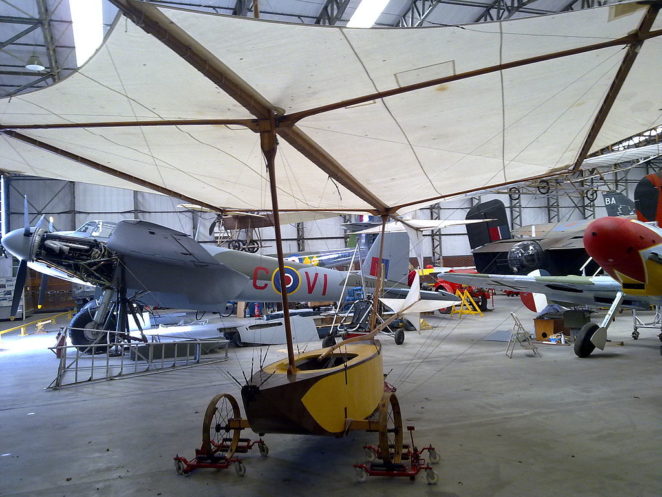
The first man to take off from the ground
and fly was not Orville Wright in 1903 but (it is believed) John Appleby, a
coachman who was a highly reluctant pioneer of aviation fifty years earlier. He
had his employer, Sir George Cayley, to thank for that.
Sir George Cayley
Born in 1773 at Brompton in Yorkshire,
George Cayley was born into wealth and privilege. He inherited his father’s
baronetcy in 1792, with which came ownership of Brompton Hall and its large
estate. At one time in his life he represented Scarborough as its Whig Member
of Parliament.
However, having a considerable amount of
leisure time on his hands, he decided to put that time to good use in the
investigation of scientific and engineering matters. He had varied interests
but is best remembered for his lifelong desire to find a way of getting a man
to fly like a bird.
From watching seagulls gliding on the wind
he soon deduced that something as heavy as a man could only get airborne if his
“wings” were still rather than flapping, and from that he proposed that there
were four fundamental forces that had to be co-ordinated, namely gravity, lift,
drag and thrust.
He was the first man to realise that a wing
would provide lift if it was shaped in such a way that the airflow above and
below moved at different speeds when the wing was in forward motion. This is
the principle that has been behind fixed-wing flight ever since.
A machine takes shape
Sir George Cayley spent many years working
on his theories and building models that put these theories into practice.
However, it was not until 1853 that he was able to build and test a real
man-carrying flying machine. This was a monoplane with kite-shaped wings made
from cloth to the extent of around 500 square feet (46 square metres), an
adjustable tail and fin, a boat-shaped cockpit slung underneath and a tricycle
undercarriage.
Sir George, having spent a lifetime working
on this project, was now an old man of 80, and therefore not suitable as the
first pilot. There have been suggestions that he would have liked to make the
experiment but his wife would have none of it!
Step forward, John Appleby
The next part of the narrative is
admittedly uncertain, because there are conflicting versions of it, but it
makes a good story and could possibly have been true.
John Appleby was Sir George’s coachman, who
had witnessed all Sir George’s previous contraptions and experiments with
bemused interest. When the glider was pulled into the open in front of the
entire household, John peered at it a little too closely and was duly spotted
by Sir George.
“Just the chap I was looking for”, said Sir
George, and John Appleby found himself strapped into the cockpit before he knew
what was happening.
The machine was wheeled to the top of a
slope and pushed downhill. The basic theory proved correct and the forward momentum
was enough to provide enough lift on the cambered wing to take the craft, and
John Appleby, into the air above the valley in front of Brompton Hall.
The flight was a short one, with the craft
making a crash landing on the other side of the valley. Sir George and the
entire household rushed across on foot, to find the coachman only slightly
injured but far from pleased.
John Appleby glared at Sir George and
promptly resigned his position, stating that he had been hired to drive
carriages and not flying machines.
Sir George Cayley’s place in history
Sir George died in 1857 and so was not able
to make any further experiments, such as building an improved design. It was
therefore left to others to carry forward the notion that manned flight was
possible.
The invention of the internal combustion
engine made it possible to think of flight that not only started from level
ground but could also be sustained in the air, despite the extra weight that
would have to be carried. This was clearly where the future lay, but it would
be another 50 years before the Wright brothers were able to make this dream a
reality.
That said, Sir George Cayley’s theories
were largely correct and only lacked other technologies to make them realisable.
For that reason, Sir George and John Appleby (assuming that this part of the
story is true) deserve their place in the history of aviation.
© John Welford
No comments:
Post a Comment